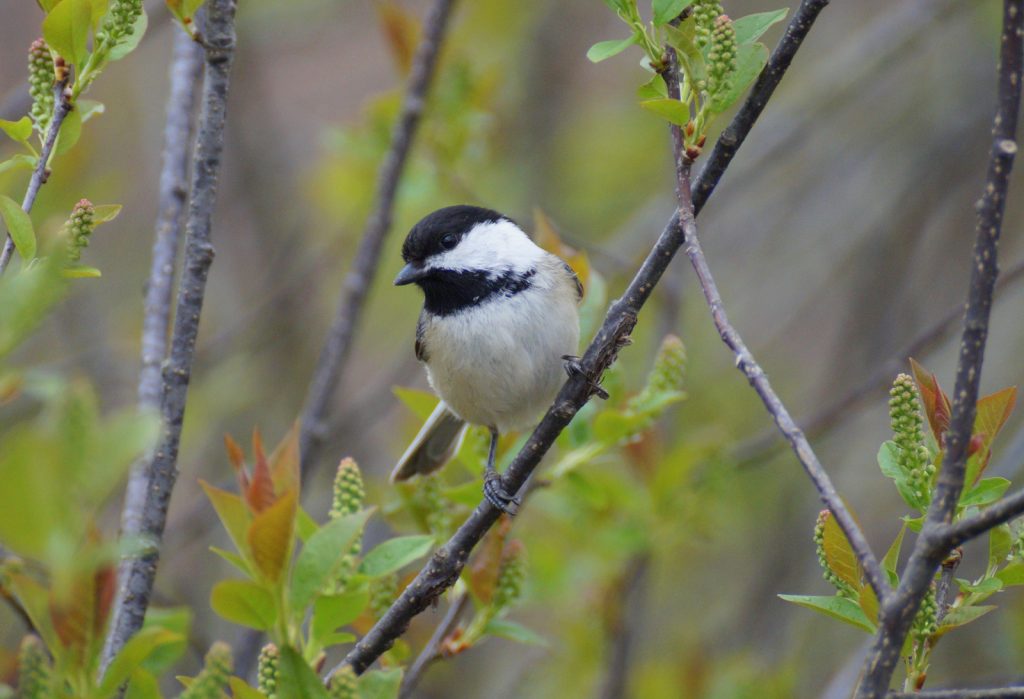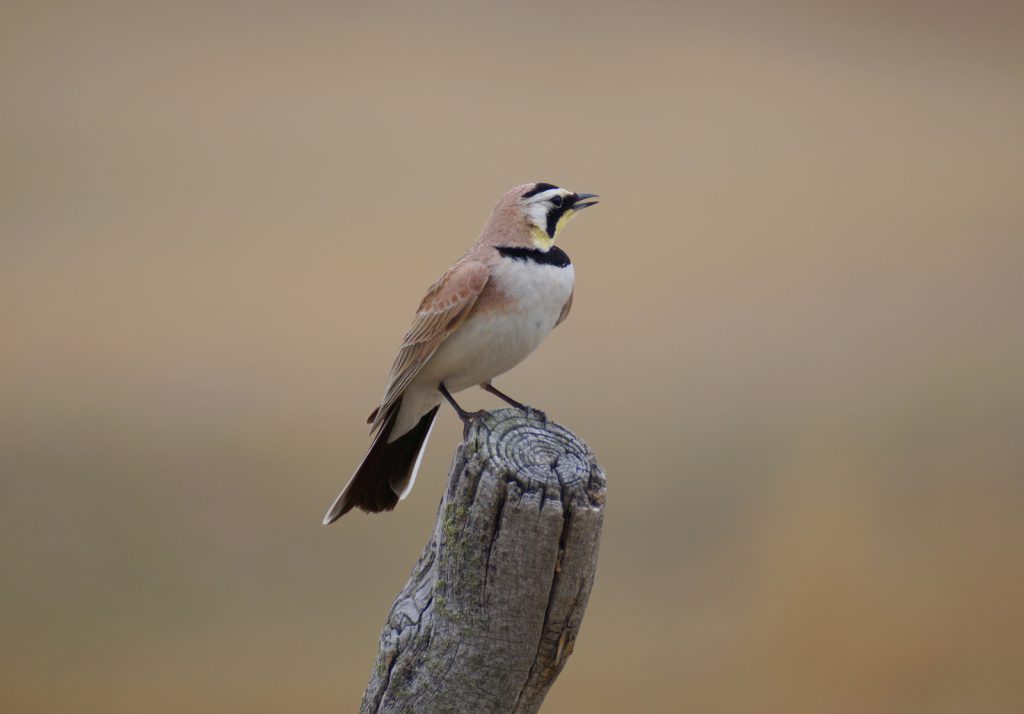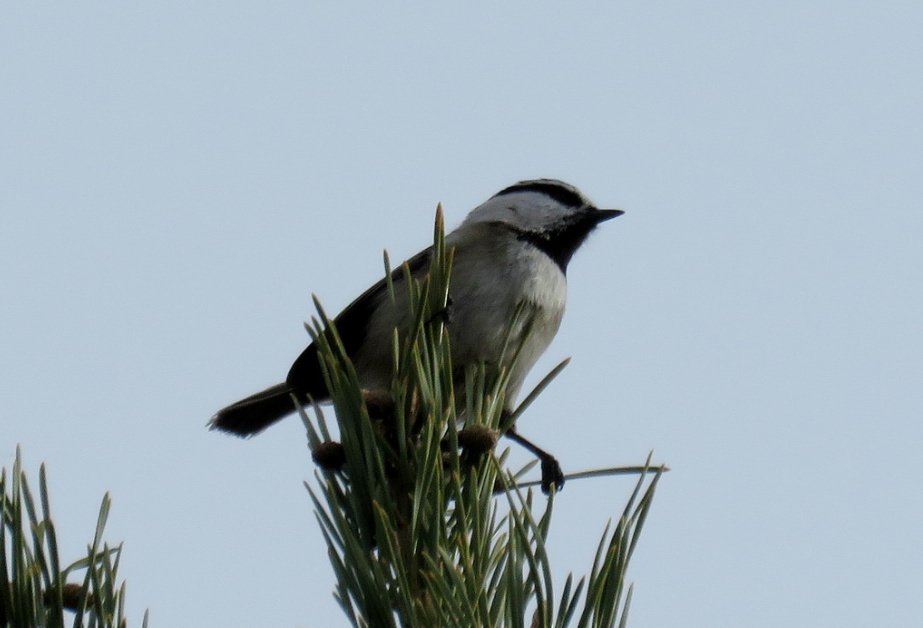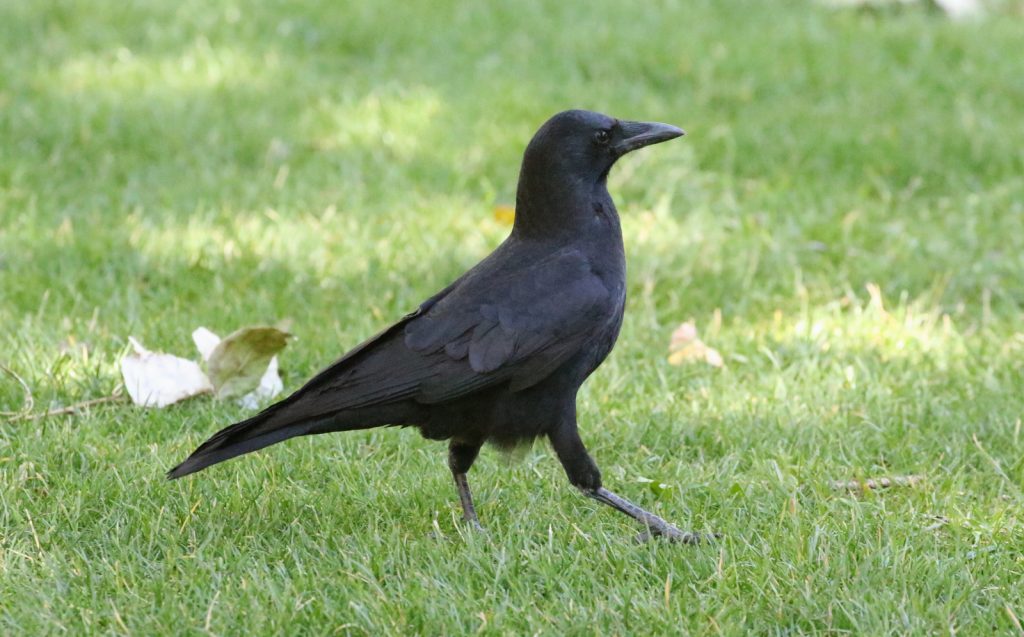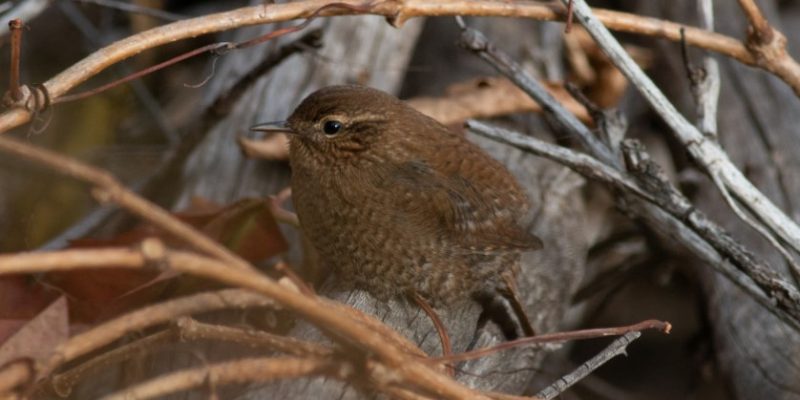Poecile atricapillus septentrionalis Status: Fairly common regular resident statewide. Fairly common winter visitor statewide, common Missouri River Valley counties. Documentation: Specimen: UNSM ZM6484, Nov 1893 Lancaster Co. Taxonomy: Nine subspecies are recognized (AviList 2025); those occurring in the central US and Canada are garrinus from central Idaho to south-central Montana south to southeastern Utah and […]
HORNED LARK
Eremophila alpestris enthymia, E. a. praticola, E. a. leucolaema, E. a. hoyti, E. a. alpestris Status: Abundant regular spring and fall migrant and winter visitor statewide. Common regular resident statewide. Documentation: Specimens: praticola, UNSM ZM6423 4 Feb 1894 Omaha, Douglas Co; leucolaema, UNSM ZM10207 12 Nov 1897 Alliance, Box Butte Co; alpestris, UNSM ZM64 16 […]
[BOREAL CHICKADEE]
Poecile hudsonicus Status: No accepted records. Taxonomy: Five subspecies are recognized (AviList 2025), including three that might be sources for a Nebraska record: columbianus of southern Alaska to Montana and Washington, hudsonicus of central Alaska to Minnesota and Labrador, and farleyi of British Columbia, Alberta, Saskatchewan, and Manitoba. Comments: There is one record, of one […]
MOUNTAIN CHICKADEE
Poecile gambeli gambeli Status: Rare regular winter visitor west, rare casual central. Documentation: Specimen: UNSM ZM17444, 23 Nov 1996 Wildcat Hills NC, Scotts Bluff Co (Brogie 1997). Taxonomy: Four subspecies are recognized (AviList 2025), three north of Mexico: baileyi of the Pacific Slope of the Rocky Mountains, inyoensis of the central Rocky Mountains and Great Basin […]
AMERICAN CROW
Corvus brachyrhynchos brachyrhynchos, C. b. hesperis Status: Common regular resident statewide. Abundant regular spring and fall migrant statewide. Abundant regular winter visitor statewide. Documentation: Specimen: UNSM ZM7635, 18 May 1907 Cass Co. Taxonomy: Chesser et al (2020) lumped former Northwestern Crow (C. caurinus) with American Crow as C. b. caurinus, adding a fifth subspecies. Five […]
PACIFIC WREN
Troglodytes pacificus Status: Rare casual fall visitor west. Taxonomy: Recent genetic studies (Drovetski et al 2004, Toews and Irwin 2008) have resulted in splitting of former holarctic Winter Wren T. troglodytes into three species, two of which breed in North America (Chesser et al 2010). The newly-elevated species are Pacific Wren T. pacificus, Winter Wren T. […]
